The Impact of Gantry and Environmental Vibration on FIMS Equipment Operation?
Case|The Impact of Gantry and Environmental Vibration on FIMS Equipment Operation?Excessive gantry vibration during FIMS equipment operation may lead to inaccuracies in machining or assembly, affecting production quality. How can quality operations be ensured?
Why Should Gantry Vibration Be Monitored in FIMS Equipment Operation?
Environmental vibration may have various impacts on the operational quality of FIMS (Flexible Integrated Manufacturing System) equipment, such as machining or assembly precision and quality, as well as potential damage to machine structures or components. These issues may result in dimensional deviations, poor component fit, and increased surface roughness, ultimately affecting product quality. Excessive vibration may lead to decreased production efficiency due to the need for maintenance or adjustments, causing production schedule delays, impacting delivery times, and increasing production costs.
Any abnormal vibrations affecting the equipment could negatively impact the production line, so it is essential to investigate and resolve any signs of anomalies immediately. Early detection and handling of gantry vibration issues ensure smooth production operations and equipment reliability.

Understanding Vibration Levels with VC Curve to Ensure Equipment Quality
Quality Control: The VC curve typically refers to the vibration limit curve of the equipment under specific working conditions. If the gantry vibration value exceeds the VC curve, it may result in quality issues such as dimensional deviations, poor component fit, or increased surface roughness. Monitoring the relationship between the gantry vibration value and the VC curve can help prevent these quality issues.
Safety: The VC curve can also be used to determine the safe working range of the equipment. If the gantry vibration value exceeds the VC curve, it could lead to equipment damage or accidents, posing a risk to workplace safety. Identifying the relationship between gantry vibration and the VC curve in a timely manner helps management take necessary safety measures to protect workers.
Efficiency Improvement: Monitoring the relationship between gantry vibration and the VC curve allows for the timely detection of equipment abnormalities and adjustments, thereby improving production efficiency. If the gantry vibration value is within the normal range, the equipment is likely operating well and stably, contributing to a smooth production schedule.
Monitoring the relationship between gantry vibration values and the VC curve in FIMS equipment operation is crucial to ensuring equipment quality, controlling production quality, and enhancing safety and efficiency.
Solutions and Monitoring Overview
VMS-PH Equipment Dynamic Analyzer
The VMS-PH Equipment Dynamic Analyzer is used to measure multiple points simultaneously in the X, Y, and Z axes, referencing the VC Curve as a vibration detection standard to understand the relationship between the equipment and environmental vibrations.
Measurement Status

Point 1: Floor Testing Location
CH1 X-axis CH2 Y-axis CH3 Z-axis
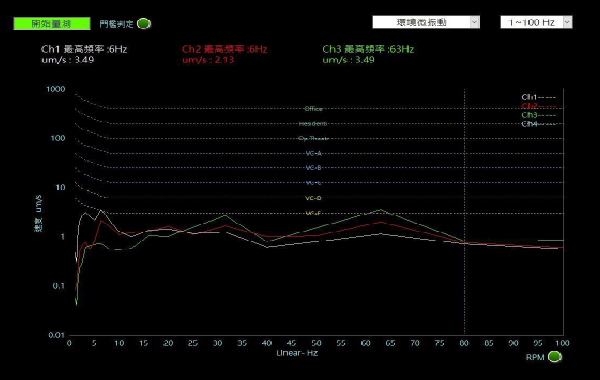
FIMS Off: VC-D
X-axis VC-E, Y-axis VC-E, Z-axis VC-D
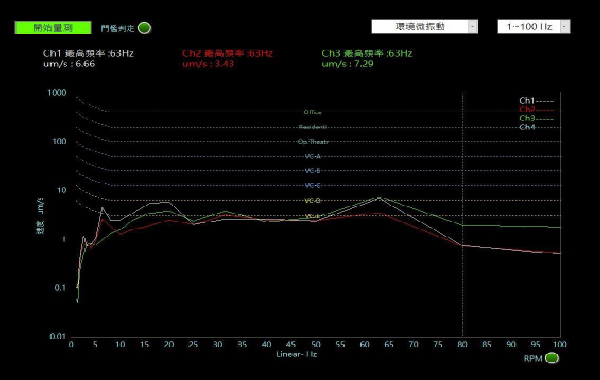
FIMS On: VC-C
X-axis VC-C, Y-axis VC-D, Z-axis VC-C
Point 2: Gantry Testing Location
CH1 X-axis CH2 Y-axis CH3 Z-axis
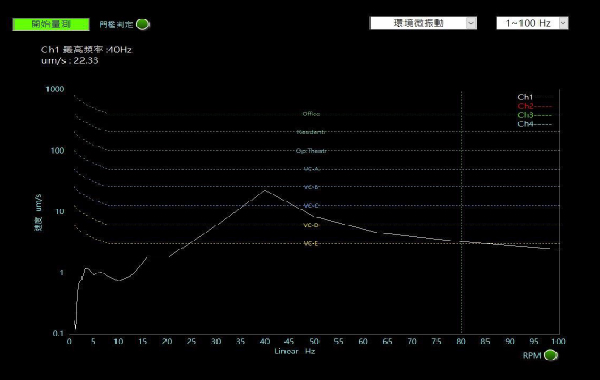
FIMS Idle: VC-B
Z-axis VC-B
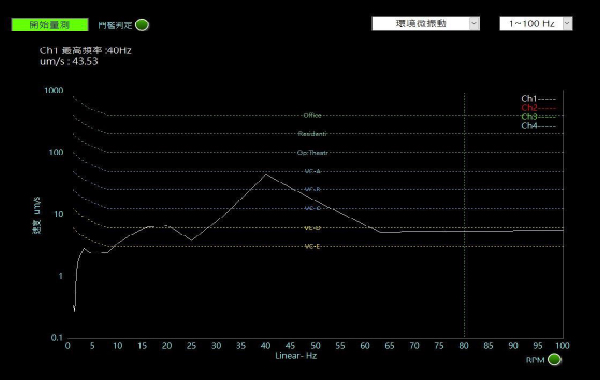
FIMS Auto Run: VC-A
Z-axis VC-A
Point 3: Floor Structural Weakness
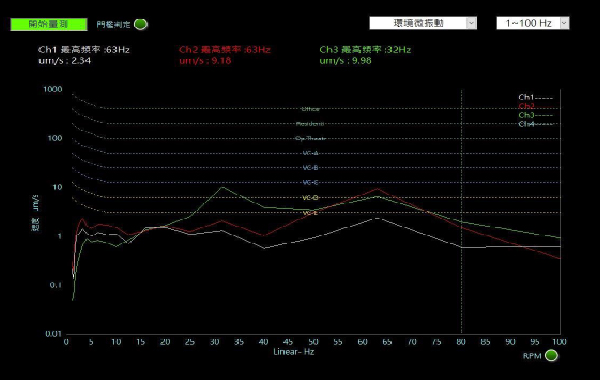
X-axis VC-E, Y-axis VC-C, Z-axis VC-C
Measurement Conclusion
1. Static floor VC-D (Minimum machining accuracy up to 0.1~0.3um)
2. FIMS On VC-C, Gantry VC-B
3. FIMS Auto Run Gantry VC-A
To mitigate the impact of environmental vibration on FIMS equipment, the following measures can be considered:
During equipment setup and installation, select a location that minimizes environmental vibration.
Use appropriate anti-vibration and damping measures, such as rubber pads or vibration isolation beds, to reduce the impact of vibrations on the equipment.
Regular inspections and maintenance should be carried out to ensure normal operation and address potential vibration issues in a timely manner. High-precision sensors and control systems should be used to monitor and adjust the operating state of the equipment to respond to changes in environmental vibrations.



